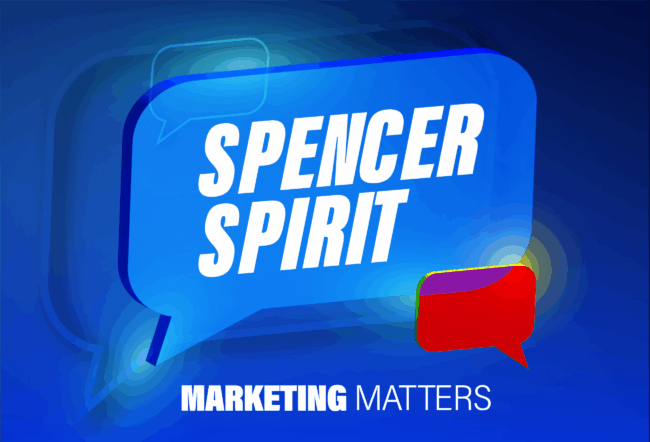During the economic downturn that most of corporate America experienced in 2001, the following companies had something in common: Intel, Texas Instruments, Cirrus Logic and Hunt Wesson. What tied them together was their decision last year to go from a direct (in-house) sales force to a contract, or outside, sales agency for some or all of their major product lines. Two other companies – Motorola and Phillips – chose to use a contract sales force after spinning off a division (the semiconductor operation for Motorola; the Airpax for Phillips). Indeed, in times of recession and/or cost-cutting, the use of outside sales representatives or agencies typically increases. As
But if Anderson and colleague Len Lodish, a marketing professor at Wharton, had their way, outside sales agencies would flourish regardless of the economic climate. The two have collaborated on research that studies how to get the most out of an outside sales force consisting of employees “who don’t report to you, don’t take orders from you and in general can’t be managed the way your own employees are managed,” says Anderson.
It’s hardly an academic question. The payoff for a productive relationship with an outside sales force can be substantial. Properly handled, says Anderson, outside sales representatives will not just work hard to sell your products, but can provide you with important information about the market in general and your competitors in particular.
Given the broad interest in sales force management, both in-house and on a contract sales basis, Anderson and Lodish will teach an executive education course March 3-7, 2002 in San Francisco titled “Leading the Effective Sales Force.”
The best available statistics, says Anderson, indicate that about 50% of all companies operating in North America use a contract sales force in some capacity, whether for a piece of their product line, a certain geographic region or a particular application. The 50% figure is high because “a lot of companies use outside reps for the ‘leftovers’ – segments or products that aren’t really central to what they are doing,” Anderson says.
For example, a company that makes power tools might hire an outside sales force to sell its products to one particular and not very large customer segment, such as military PXes. On the other hand, some industries, like electronic components, hardware and chemicals, use outside reps for a substantial part of their business. National Semiconductor and Advanced Micro Devices fall into this category, in part because their components are used in so many products in so many industries that it would be difficult for an in-house sales force to cover the entire market.
Contract sales forces can sell services as well, such as advertising. For example, a radio station might use an outside sales force to sell its radio time to advertisers. The theory is the same, says Anderson. “Potentially anyone could advertise, and an in-house sales force can’t cover everybody.”
While some outside agencies are huge – especially in the food business where one agency (“food broker”) often employs several hundred people – agencies in most other industries tend to be small. The typical outfit is a 5 to 10-person firm covering a well-defined and somewhat narrow geography.
Anderson says that some industries don’t lend themselves well to outside reps. Pharmaceutical companies’ sales forces are almost always in-house because of ethics and accountability issues unique to selling drugs. But for smaller pharmaceutical products, says Lodish, drug companies “are finding they can’t give them the attention they need. An outside sales force, one with expertise in the industry, can. So the pharmaceuticals are turning to outsourcing in these instances.”
“Optimal Allocation”
In their research into business to business markets, Anderson and Lodish have studied how outside agencies allocate their time to their various manufacturer clients, i.e. which manufacturers received more of the sales reps’ time and which received less. The key, it turns out, is “optimal allocation.”
“The biggest thing you as a manufacturer can do to make your outside sales force interested in selling your product is to make it financially interesting compared to the rest of the agency’s products,” says Anderson. “Basically you have to sell your product to the sales force before you can sell it to your customers.”
Anderson and Lodish worked out the time split that would maximize an agency’s profits. “We asked the following question: If we were the owners of this agency and all we wanted to do is make as much money as we could, what amount of time should we give each product? What time spread would give us the optimal return? The optimal return goes up if one product line offers a better commission to the sales force. It goes up if one hour spent selling that product gives the agency more volume than one hour spent selling something else. The optimal return goes down if an hour spent selling doesn’t lead to many sales or if the commission rate is lower.”
The important thing to remember, says Anderson, is that “sales agencies are run by good managers with a good nose for where the money is. Some manufacturers don’t think sales reps have the brains to figure that out. They do.”
Anderson and Lodish also looked at the “more human” side of the business when trying to determine which manufacturers were able to get the most selling time from their outside reps. They found that the second biggest factor, behind optimal allocation, was the manufacturer’s ability to communicate with the agency. That includes “good listening.” Manufacturers who listened as well as talked were successful in getting a rep’s attention, which resulted in two payoffs – more of the rep’s time and more information from that rep on the market. “One of the reasons many companies don’t like to use an outside sales force is because they say they can get market reports from their own people. But a lot of inside people don’t take the time to make those reports, while many outside agencies do,” says Anderson.
The third most important dynamic in the manufacturer/sales force relationship is synergy. An outside sales rep will make up a portfolio of products that are complementary, but not competitive. For example, the rep will sign up a paper manufacturer, a desk supplies manufacturer, a printer manufacturer and so forth, so that he or she has one brand in every product category. When the sales rep calls on an office products buyer, the rep covering this market has the advantage of a full product line that not only increases sales for him and his client but also ensures better access to the time-challenged buyer. “A sales rep can leverage off the fact that he is the trusted source of information for a whole slew of products. He sells more products and provides a service to the buyer,” says Anderson. Synergy, she adds, “means your line fits in well with the other lines. The more your product has synergy, the more time you will get from your rep.”
Anderson recalled an electronic components sales rep who was convinced by a manufacturer of rotating crystal balls to include his product in sales calls to discotheque owners. Discos are stuffed with sophisticated electronic equipment, so the rep, an engineer by training, made long sales calls dominated by discussion of electronics. The rep later told the crystal ball manufacturer that he was “too embarrassed” to promote the product during his calls. “That’s negative synergy,” says Anderson. “An engineer talking about crystal balls” was not a winning combination.
The researchers also studied the impact that “getting along well” with your outside reps has on a successful relationship. “Yes, it’s important to get along with, and trust, each other but what was striking in our research is that this attribute is not that big,” says Anderson. “At the end of the day, the reps are businesspeople. They won’t spend more time on your product just because they like you. The price you pay for not being buddies with them is not very high. Again, this goes against the image many manufactures have of sales people which is that are unsophisticated. They aren’t.”
The Importance of Forecasting
Sales agencies care about accurate forecasts, mainly because it helps them decide how much time to put into selling a particular product. While forecasts were not as influential as the other factors mentioned above, “No news is bad news when trying to develop a sales forecast. We tell manufacturers that if they have any kind of information that would indicate how their product will sell in the field, don’t hold it back,” says Anderson. “Share it with the sales agency so the rep will be more confident in his forecast. It will get you more time.”
Almost important as accurate forecasting are the growth prospects for a manufacturer’s product category. “The potential for that category to grow over five years will affect the attention it gets from the rep,” says Anderson. “It shows sales agencies are thinking about the future.”
Anderson and Lodish also studied the manufacturer’s power over the agent. “We find, as you would expect, that the more powerful the manufacturer is, the more time his product gets. The more powerful the agency is, the more it can decide how much time to give. But overall, this relationship is not that big a factor, mainly because these agencies very carefully keep a diversified portfolio of manufacturers,” says Anderson. “They follow the ‘rule of one third.’ If one manufacturer is beginning to account for more than one third of the agency’s sales, it risks becoming too powerful. The agency will most likely focus on growing its business” in order to dilute that power.
Scapegoats for Poor Performance
After more than a decade of research into this field, Anderson is more convinced than ever that outside sales agencies, if managed properly, make sense for most companies. Yet even companies that sign on with agencies “are almost apologetic about doing it and, in fact, tend to misuse them. And when they misuse them, these manufacturers then turn around and blame the sales agency rather than themselves or their product.”
In the 1980s, Apple Computer used all outside sales reps but eventually went to an all direct (in-house) sales force after claiming that reps weren’t doing a good enough job of selling Apple’s products. “We now know, of course, that there were significant market reasons why the computers weren’t selling, but Apple chose instead to blame the reps,” says Anderson. Companies that mismanage outside sales agencies will also mismanage their own direct sales force and often end up in bankruptcy, she added.
Ironically, even when outside sales forces are doing well, companies will use that as another excuse to discontinue them. “One of the most common reasons a manufacturer will ditch the rep and go direct is because the rep is doing a great job,” says Anderson. “The manufacturer thinks, ‘Wow. We could do even better if we had our own people.’ It’s the fundamental attribution bias: You blame external forces for all bad news and take credit for all good news. So reps are in danger of losing business if they do well or if they do badly.” What some companies don’t realize, adds Lodish, “is that outside sales reps are often more motivated than the internal sales force. They know more about the market and they are hungry for the business.”
Anderson recently spent time interviewing members of a $100 million manufacturer of electronic components located in the northeastern U.S. that uses an outside sales force. She also interviewed several of the outside reps. “One of the things that was clear from talking to company employees was that they have an unquestioned respect for their sales agents. They view them the way others view their lawyers or consultants or accountants. They trust and respect them and treat them as professionals. The sales reps handle 85% of the manufacturer’s business. It’s a very successful relationship.”



